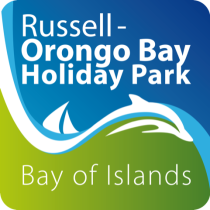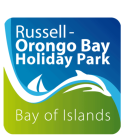Russell Orongo Bay Holiday Park is set amongst 14 acres of native New Zealand bush. Take a walk around the park or on our kiwi trail and you’ll a huge range of native floral and fauna.
How many can you spot?
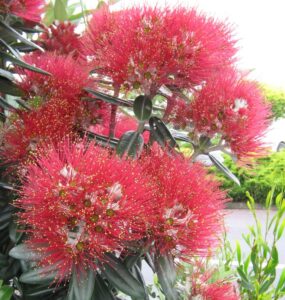
PŌHUTUKAWA – Metrosideros excelsa
An iconic New Zealand tree commonly referred to as New Zealand’s Christmas tree due to the bright red flowers that bloom about Christmas time. An evergreen tree found in coastal areas with a prominent place in Māori mythology.
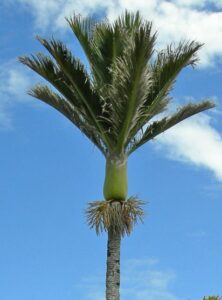
NĪKAU – Rhopalostylis sapida
New Zealand’s only palm mostly found in coastal and low land areas and in the North. Traditionally had many uses by Māori. It is very slow growing and reaches a height of 10-15m.
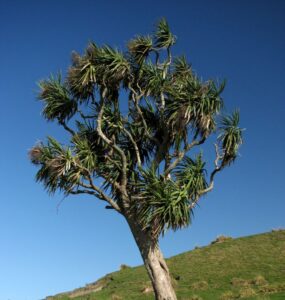
TĪ KŌUKA OR CABBAGE TREE – Cordyline australis
Tī kōuka are widespread throughout New Zealand found in open spaces, wetlands and farmland. They are quite distinctive looking with long narrow leaves. Māori used the cabbage tree for food and weaving.
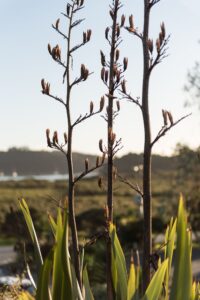
HARAKEKE OR FLAX – Phormium tenax
Commonly found across New Zealand it has green upright leaves and dull red flowers attracting many native birds that feed on its nectar. Used by Māori for it’s fibre and medicinal uses.
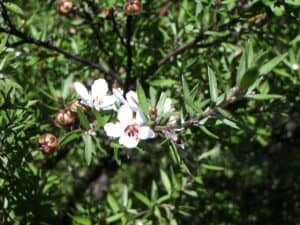
MĀNUKA – Leptospermum scoparium
A common native tree with aromatic, prickly leaves and many small, white, pink or red flowers. It’s wood chips are commonly used in smoking to impart flavour and honey made from Mānuka flowers is dark and has a sweet, slightly aromatic flavour and highly prized for it’s health benefits.
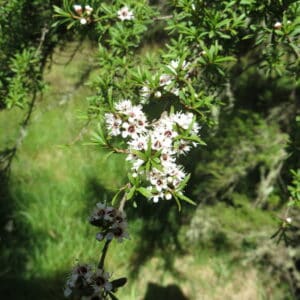
KĀNUKA – Kunzea ericoides
Very similar to the mānuka but it will grow much taller and the leaves are soft, unlike mānuka leaves which are prickly.
![By Phil Brown for Maungatautari Ecological Island Trust – [1], Public Domain, https://commons.wikimedia.org/w/index.php?curid=1749836 By Phil Brown for Maungatautari Ecological Island Trust - [1], Public Domain, https://commons.wikimedia.org/w/index.php?curid=1749836](https://russellaccommodation.co.nz/wp-content/uploads/2020/08/NorthernrataMaungatautari-300x219.jpg)
RĀTĀ
The rātā belongs to the same family as the pōhutukawa, sharing a similar bright red bloom November through to January although it’s leaves and flowers are smaller. It’s nectar is very popular with honeybees and native bird’s benefit from this tree.
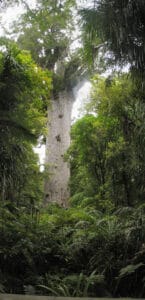
KAURI – Agathis australis
New Zealand’s largest forest tree found only in the northern North Island. It can grow to over 50 m tall, with trunk girths up to 16m, and live for over 2,000 years. Popular for its timber and gum which both had many uses.
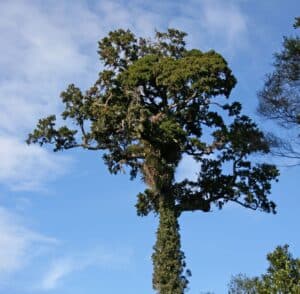
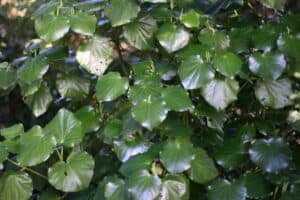
KAWAKAWA – Piper excelsum
Kawakawa is a native NZ plant with bright green heart shaped leaves. Commonly known as ‘Māori bush basil’, for its aromatic flavour it was traditionally brewed into an anti inflammatory tonic and used to aid digestion. It is also used as a seasoning in cooking.
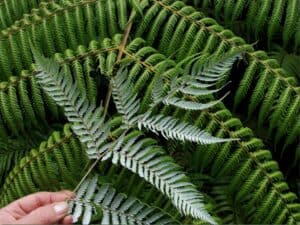
FERNS
New Zealand has approximately 200 species of ferns and a large number (about 40%) cannot be found anywhere else in the world.
The silver fern is a national symbol recognised for the silver-white underneath it’s fronds.
The Koru (a new unfurling fern frond) is a well known symbol in Māori art symbolising new life, growth, strength and peace.
Some ferns are edible and the fronds are called piko piko, they taste similar to aspargus.
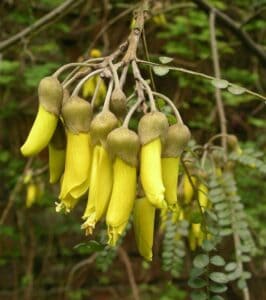
KŌWHAI – Eight species known as the genus Sophora with Sophora microphylla the most popular.
New Zealand’s ‘unofficial’ flower. This is small-leaved native tree common along riverbanks and forest best known for their hanging clusters of large yellow flowers in early spring. A tree valued by Māori for its hard wood and medicinal properties.
